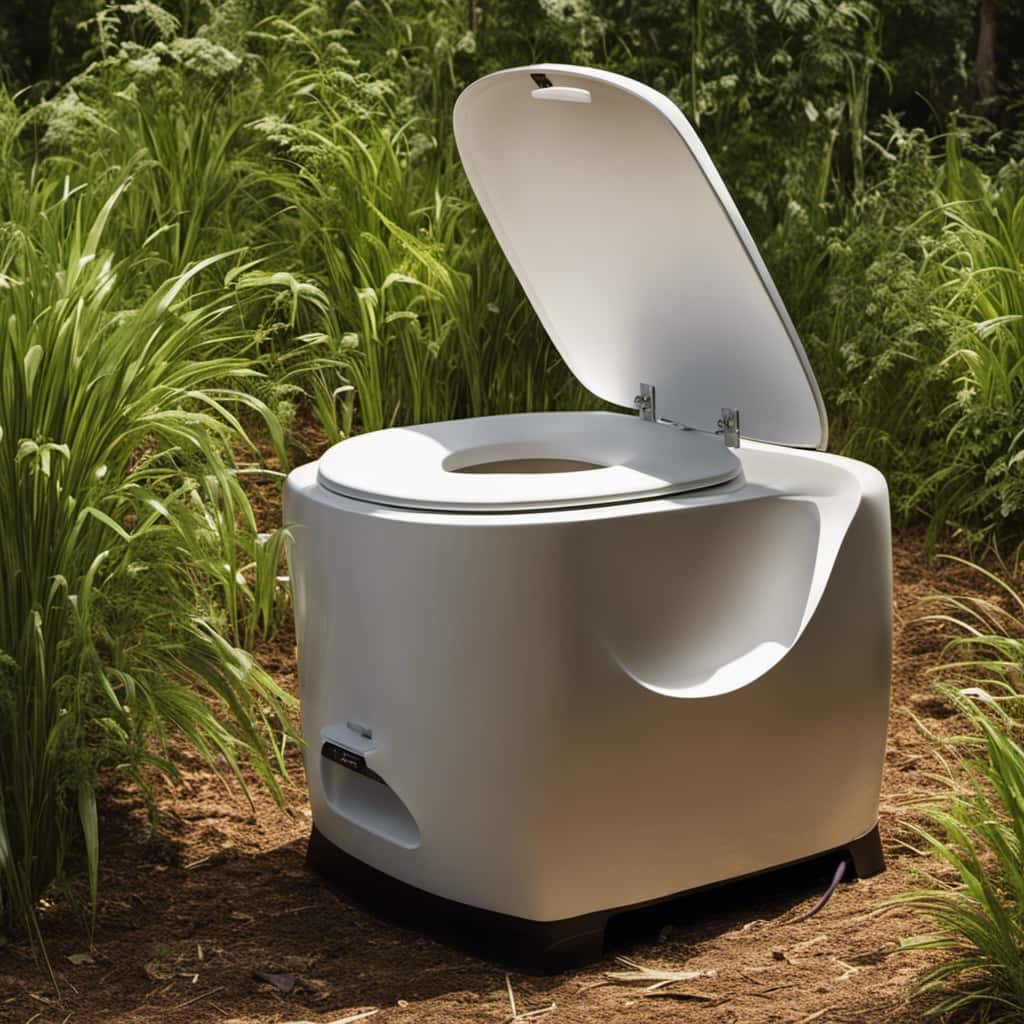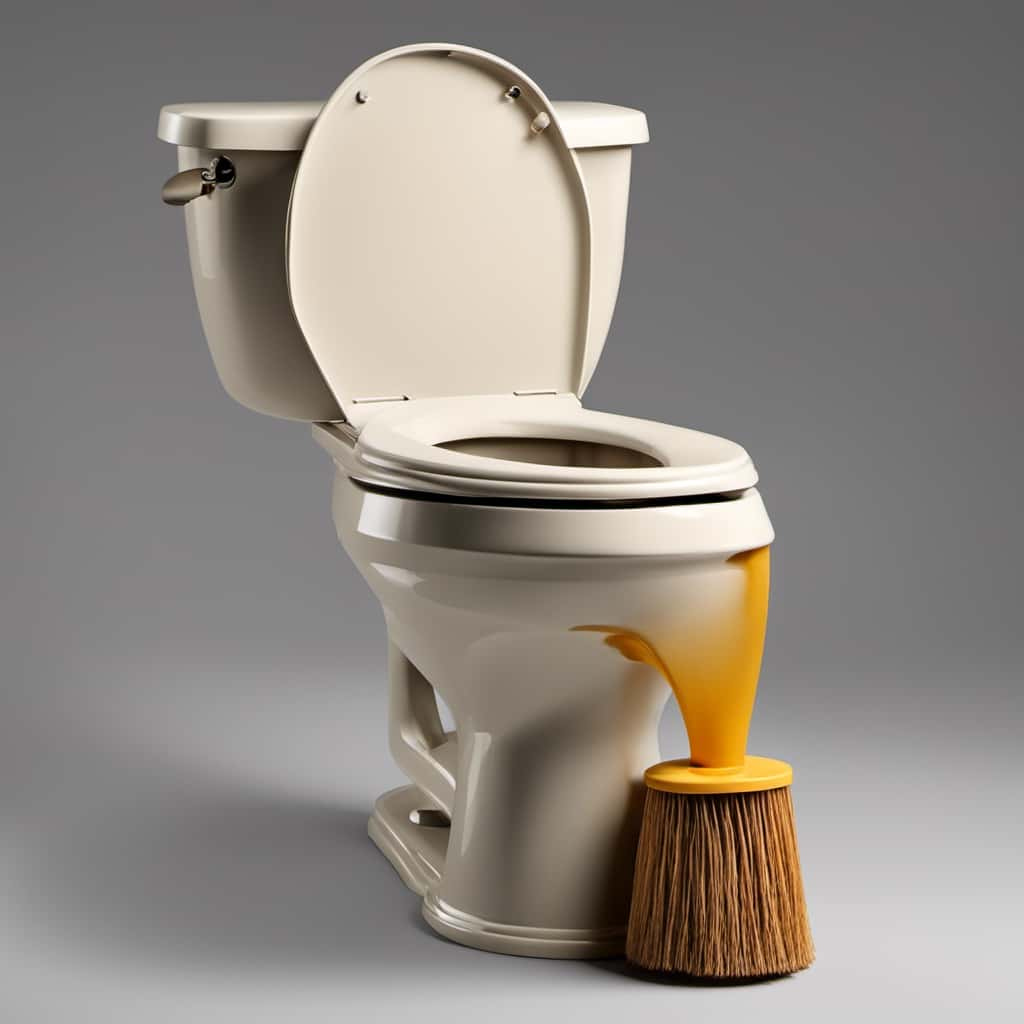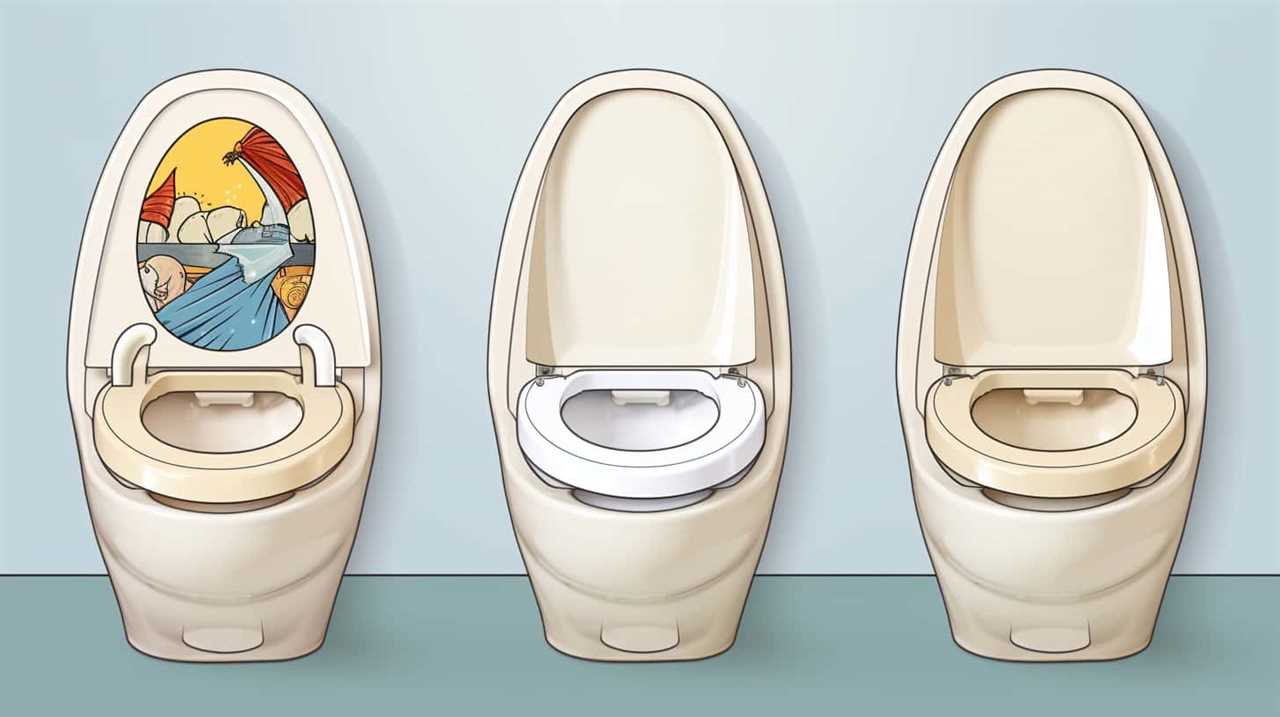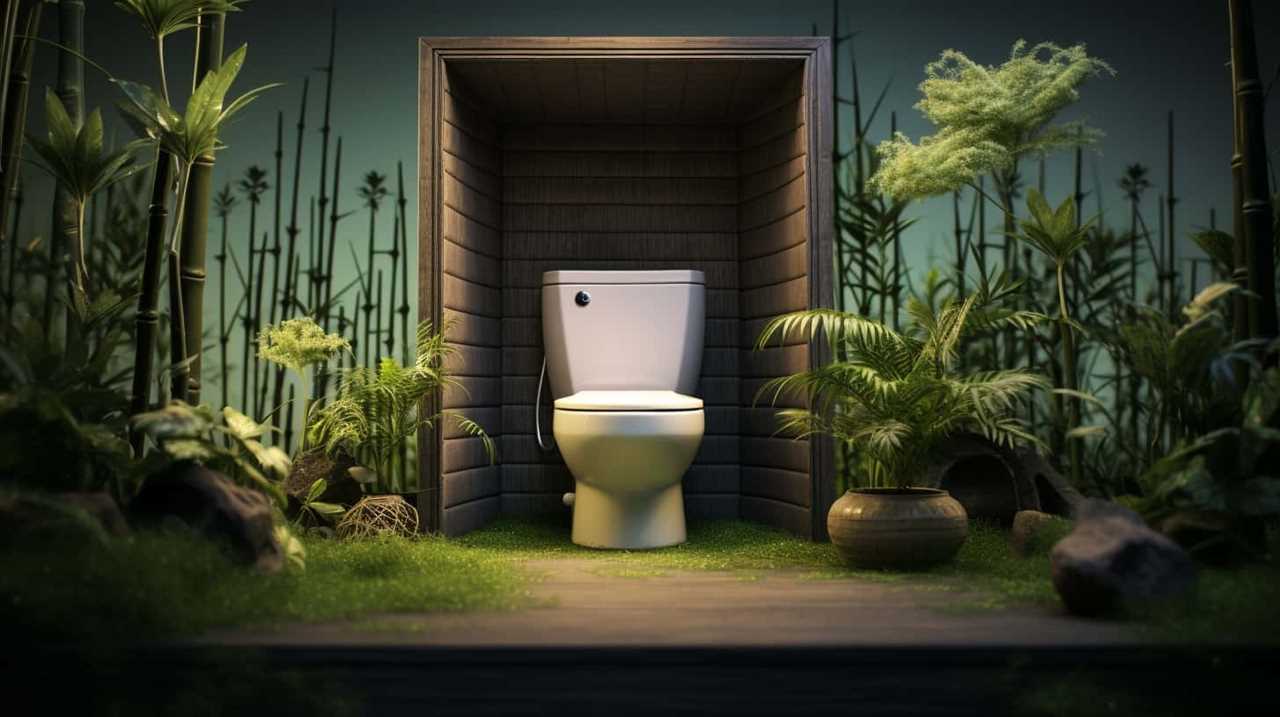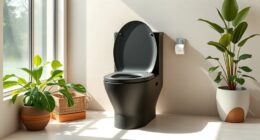Did you know that every year, billions of gallons of wastewater are flushed down toilets around the world?
In this article, we will explore the fascinating journey of flushed waste, from the moment it leaves your toilet bowl to its ultimate destination.
We will delve into the intricate workings of plumbing systems, the treatment and disposal of sewage, and the environmental impacts of flushing.
Join us as we uncover the hidden world of toilet flushing and gain a deeper understanding of this vital process.
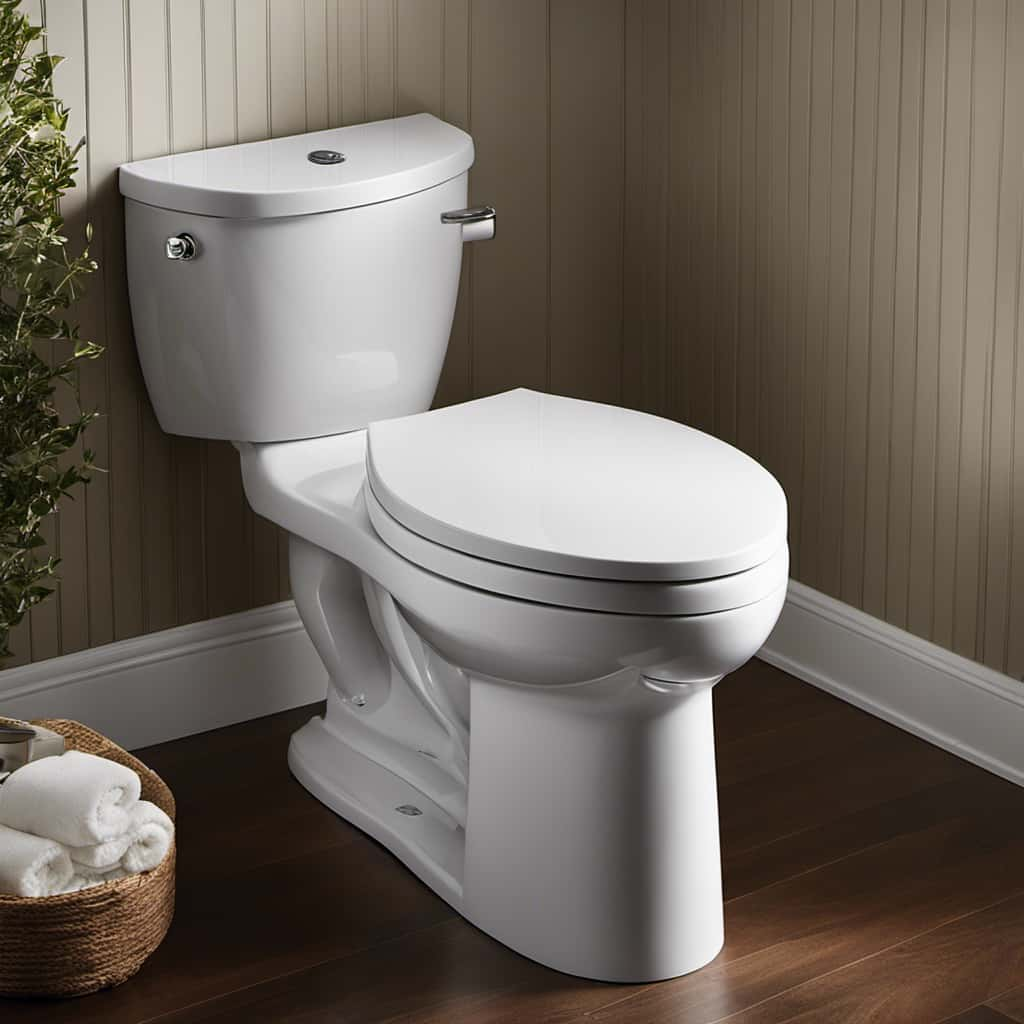
Key Takeaways
- Toilets use engineering and physics to remove waste and conserve water.
- Flushed waste goes through a series of pipes and ends up in the sewage system.
- The sewage treatment process involves preliminary, primary, secondary, and tertiary treatments.
- Water conservation practices, such as installing low-flow toilets and fixing leaks promptly, can help mitigate the environmental impacts of flushing toilets.
How Toilets Work: A Brief Overview
To understand how toilets work, we’ll briefly explain the process using a common example.
Toilet mechanics involve a combination of engineering and physics to efficiently remove waste and conserve water. When you press the flush lever, it lifts a chain or rod connected to the flapper valve. This valve opens, allowing water from the tank to rush into the bowl.
The force of the water creates a siphon effect, causing waste and water to be sucked down the drainpipe. As the water level in the bowl drops, the flapper valve closes, preventing any backflow.
The tank then refills with water, ready for the next flush. This system ensures effective waste removal while promoting water conservation, as modern toilets use less water per flush compared to older models.
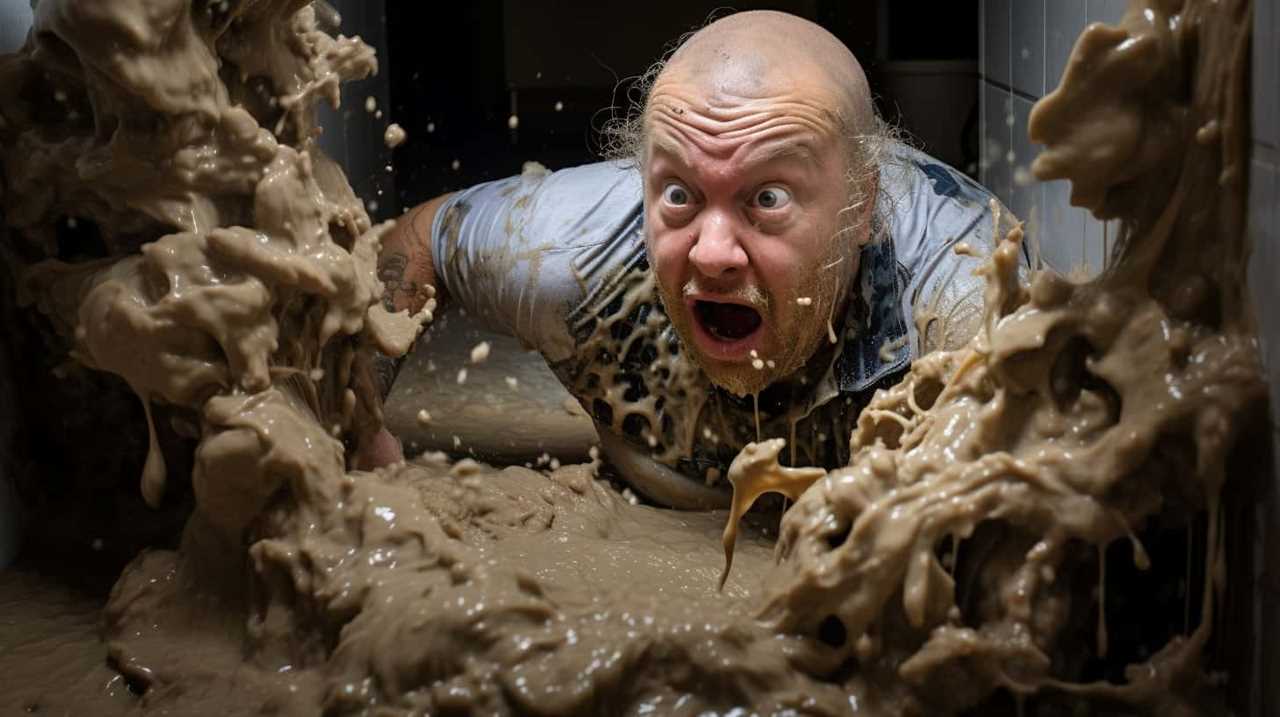
The Journey of Flushed Waste
After being flushed, waste from the toilet goes through a series of pipes and ultimately ends up in the sewage system. Once in the sewage system, the waste undergoes a sewage treatment process to remove impurities and pollutants before it’s discharged into the environment.
This process typically involves several stages, including physical, chemical, and biological treatments, to ensure that the wastewater is properly treated and safe for the environment. The sewage treatment process plays a crucial role in maintaining a clean and healthy environment by effectively treating and disposing of waste.
Additionally, it’s important to note that water conservation efforts are also an integral part of the sewage treatment process. By reducing water usage and implementing water-saving measures, we can minimize the amount of wastewater that needs to be treated, thus conserving water resources.
Transitioning to the next section, let’s now explore the role of plumbing systems in ensuring the proper flow and disposal of waste.
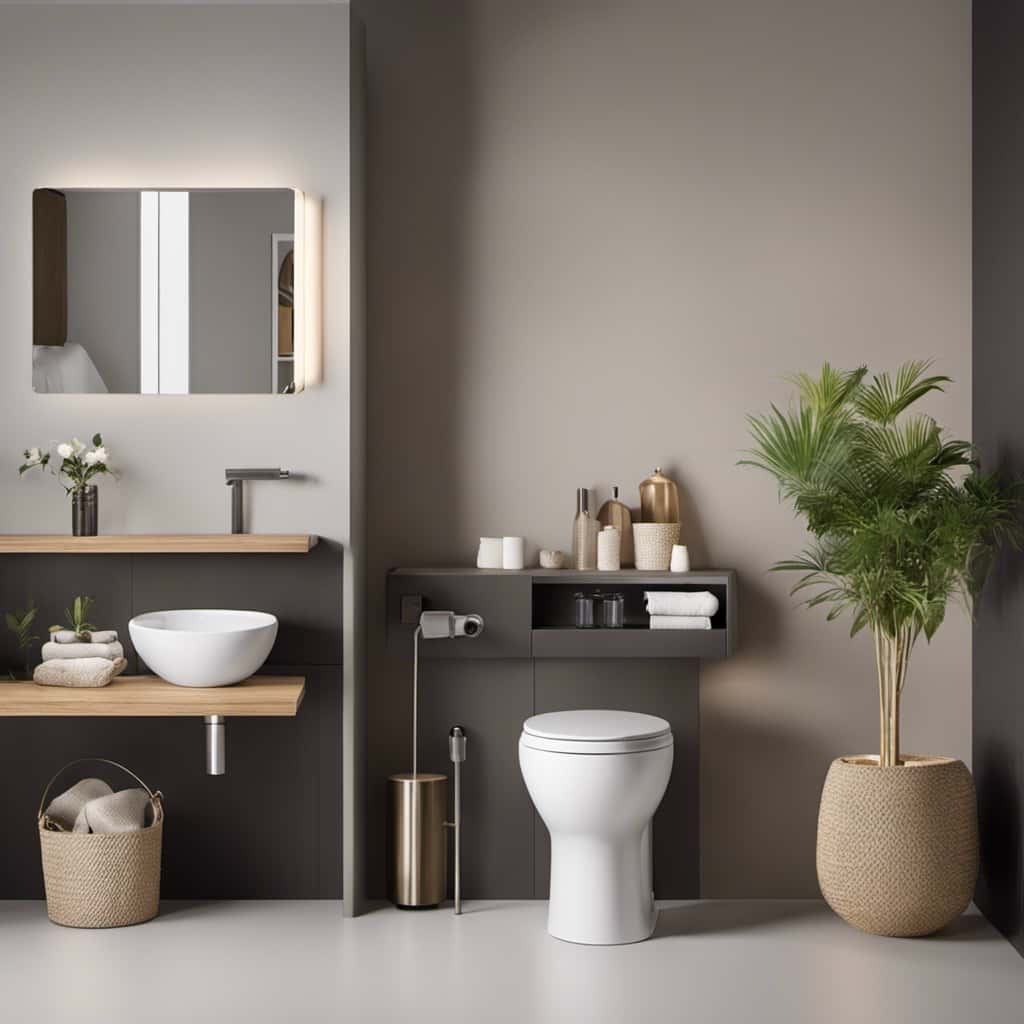
The Role of Plumbing Systems
Within the overall journey of flushed waste, our plumbing systems play a crucial role in directing and transporting it to the sewage system.
These systems are responsible for both the water supply and wastewater management in our homes and buildings.
The water supply is delivered to our toilets through a network of pipes connected to the main water line. When we flush the toilet, the plumbing system activates a mechanism that releases a specific amount of water to carry the waste away.
This wastewater is then directed through a series of pipes, including drainage pipes and sewer lines, which lead to the municipal sewage system.
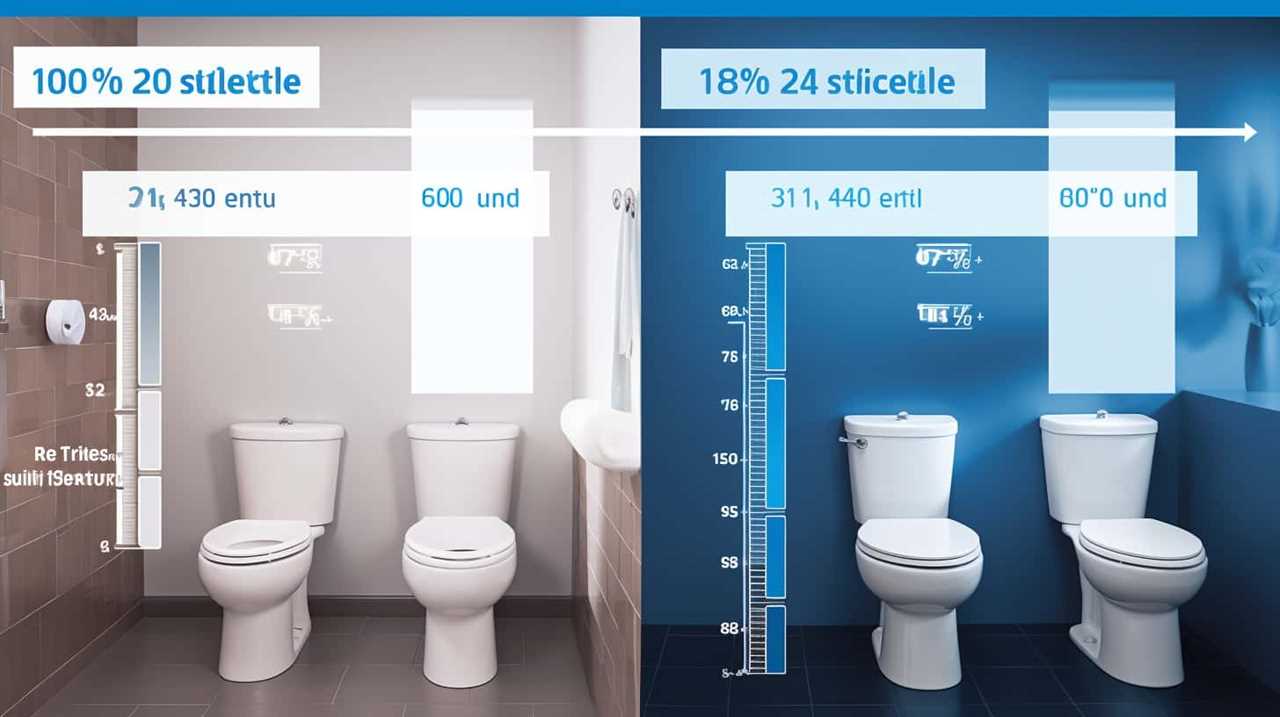
The plumbing system ensures that the waste is effectively transported and disposed of, preventing health hazards and maintaining a clean and hygienic environment.
Treatment and Disposal of Sewage
Once the wastewater is directed through the series of pipes and sewer lines, we, as the homeowners or building occupants, rely on the municipal sewage system to handle the treatment and disposal of the sewage. The sewage treatment process is crucial for maintaining public health and the environment.
Here is a breakdown of the steps involved in sewage treatment and wastewater management:
- Preliminary treatment: The wastewater undergoes screening to remove large debris and objects like plastics and rags.
- Primary treatment: In this step, the wastewater is allowed to settle in large tanks, allowing solids to settle to the bottom and oils and greases to float to the surface. These solids are subsequently removed.
- Secondary treatment: This stage involves the use of bacteria and other microorganisms to break down organic matter in the wastewater, converting it into harmless substances. This is typically done in large aeration tanks.
- Tertiary treatment: If necessary, this final step further removes any remaining contaminants, such as phosphorus and nitrogen, through processes like filtration or disinfection.
Environmental Impacts of Flushing
Flushing toilets contributes to the environmental impacts of wastewater disposal. While it is a convenient and hygienic way to get rid of human waste, the excessive use of water and the disposal of harmful chemicals can have detrimental effects on the environment. To mitigate these impacts, water conservation practices and alternatives to traditional flushing methods have been developed.
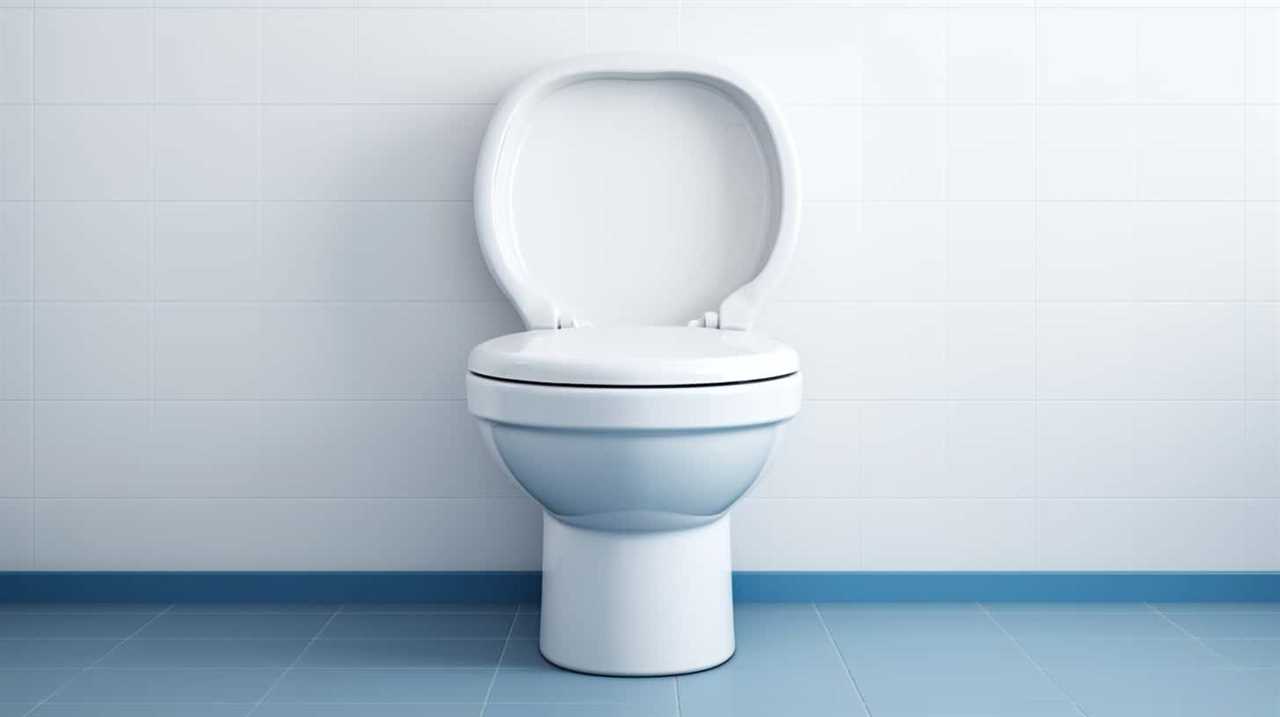
| Water Conservation Practices | Alternatives to Traditional Flushing Methods |
|---|---|
| Installing low-flow toilets and faucets | Using waterless or composting toilets |
| Fixing leaks promptly | Using greywater systems to recycle water from sinks and showers |
| Collecting and reusing rainwater | Using vacuum toilets that require less water |
| Educating communities about water conservation | Using dry flush toilets that seal waste in bags |
Implementing these practices and alternatives can significantly reduce water consumption and minimize the release of harmful chemicals into the environment. By adopting sustainable flushing methods, we can contribute to the preservation of our precious water resources and protect the ecosystems that depend on them.
Frequently Asked Questions
What Are Some Common Problems That Can Occur With Toilets and How Can They Be Fixed?
When it comes to toilet troubleshooting, there are a few common problems that can occur. These include clogs, leaks, and running toilets. Luckily, most of these issues can be fixed with some DIY toilet repairs.
Are There Any Alternative Methods for Disposing of Human Waste Besides Flushing It Down the Toilet?
Composting toilets and incineration toilets are alternative methods for disposing of human waste. They provide environmentally friendly options by converting waste into usable compost or using high temperatures to completely burn it.
How Does the Water Pressure in a Toilet Tank Affect the Flushing Power?
The water pressure in a toilet tank directly affects the flushing power. Higher water pressure creates a stronger force, allowing for a more efficient flush. This ensures that waste is effectively removed from the toilet bowl.
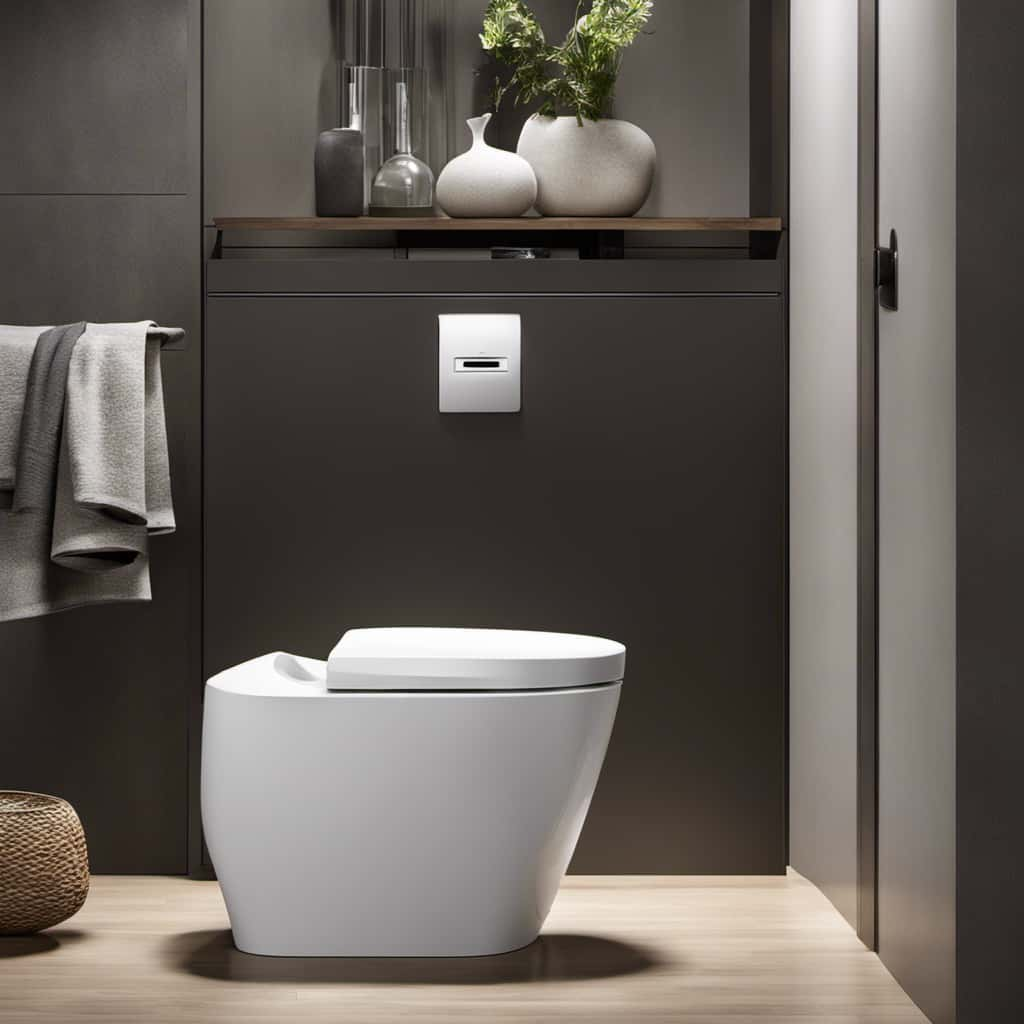
Can Flushing Certain Items, Such as Baby Wipes or Cotton Balls, Cause Damage to Plumbing Systems?
Flushing baby wipes or cotton balls can cause damage to plumbing systems. These items do not dissolve like toilet paper and can clog pipes, leading to blockages and potentially costly repairs.
What Measures Can Be Taken to Reduce the Environmental Impact of Flushing Toilets?
To reduce the environmental impact of flushing toilets, we can implement water conservation measures such as using dual flush systems and low-flow toilets. Another option is composting toilets, which convert waste into nutrient-rich compost.
Conclusion
In conclusion, understanding where toilets flush to is crucial for a well-functioning plumbing system and proper waste disposal. The journey of flushed waste takes it through a series of pipes, ultimately leading to treatment and disposal in sewage systems.
However, have you ever wondered what happens to the waste once it leaves your toilet? Can you imagine the intricate network of pipes and treatment facilities that handle our everyday waste?
